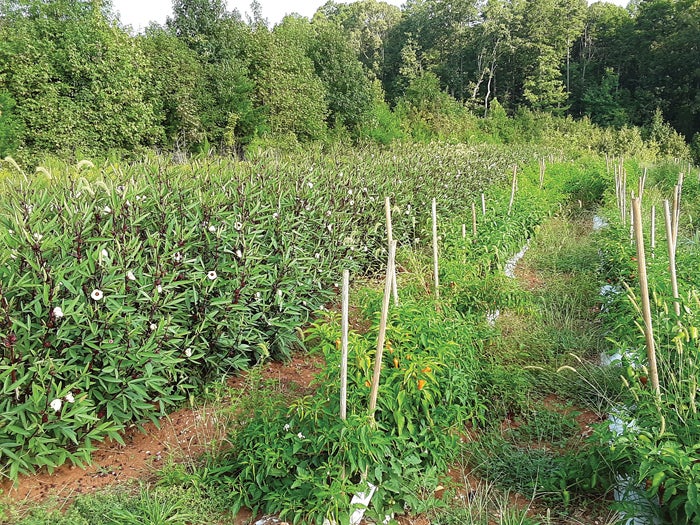Planning for next season: pollinator plots and green manures
Published 12:00 am Friday, September 7, 2018

- Submitted photo Hibiscus planted next to peppers produces beautiful flowers in the late summer.
By Michael Fine
Rowan Cooperative Extension
Whether talking about a small market farm, a highly productive homestead, or a backyard hobby garden, the folks who seriously endeavor to create homegrown, healthy food share a passion of improving their practices year after year.
Veteran farmers can attest that while the production season dwindles down in the late fall and winter, the work required maintaining a healthy foodscape is far from over. This is because vigilant farmers know that the fall is the perfect time to set the stage for a productive spring season. Fall provides us with the perfect window to plan next year’s vegetables, plant cover crops and establish perennial pollinator habitats.
Let’s use our imaginations and do a mental walk-through of an ideal North Carolina homestead in September (this may sound silly, but well-functioning homesteads are built by folks continually imagining an ideal farm and then creating it). So, right now, summer crops have surpassed their prime and have been removed during August. Some of those plots were planted with hearty, cool season crops that would provide us with vegetables during the late fall and early winter.
By now, those crops are looking strong and well on their way to maturity. Other plots, which once housed summer vegetables, are bare and in the process of receiving the seeds of cover crops such as winter rye, Austrian winter pea, oats and clovers.
If soil tests indicate a need for lime, it is advantageous and economical to spread lime and cover crop seed at the same time. Things are looking pretty good on our imaginary farm. We have cover crops planted and productive cool season vegetables growing.
We now take a look at what improvements we would like to make for next year on our farm. Ideally, one of the objectives for our farm next year may be to increase biodiversity for pollinating insects. This is a worthwhile endeavor to pursue and believe it or not, starts in fall.
Pollinating insects include many species such as honeybees, carpenter bees, beetles, ladybugs, butterflies and moths. Planting perennial shrubs in the fall that flower during different times of the summer can provide attractions throughout the growing season.
Also, plan your garden layout to include wildflower beds on the margins. Flower beds not only provide you with beautiful surroundings, but increase the biodiversity of your plant life and, in turn, the biodiversity of your pollinating insects. By providing the space needed to ensure a good pollinator habitat, we are accomplishing several objectives that make for better vegetable garden production.
Better pollination increases yields and decreases funky shaped fruit that was poorly pollinated. At the same time, we are providing a safe harbor for many species of carnivorous insects that are predators to our troublesome herbivorous insect pests.
Thank you for taking the time to imagine a healthy farmstead that provides us with enjoyment and self-sufficiency. Provided below are some helpful links that can support us as we manage our farmsteads this fall.
https://growingsmallfarms.ces.ncsu.edu : search “pollination” for pollinator resources
https://growingsmallfarms.ces.ncsu.edu/growingsmallfarms-wintercrops/



